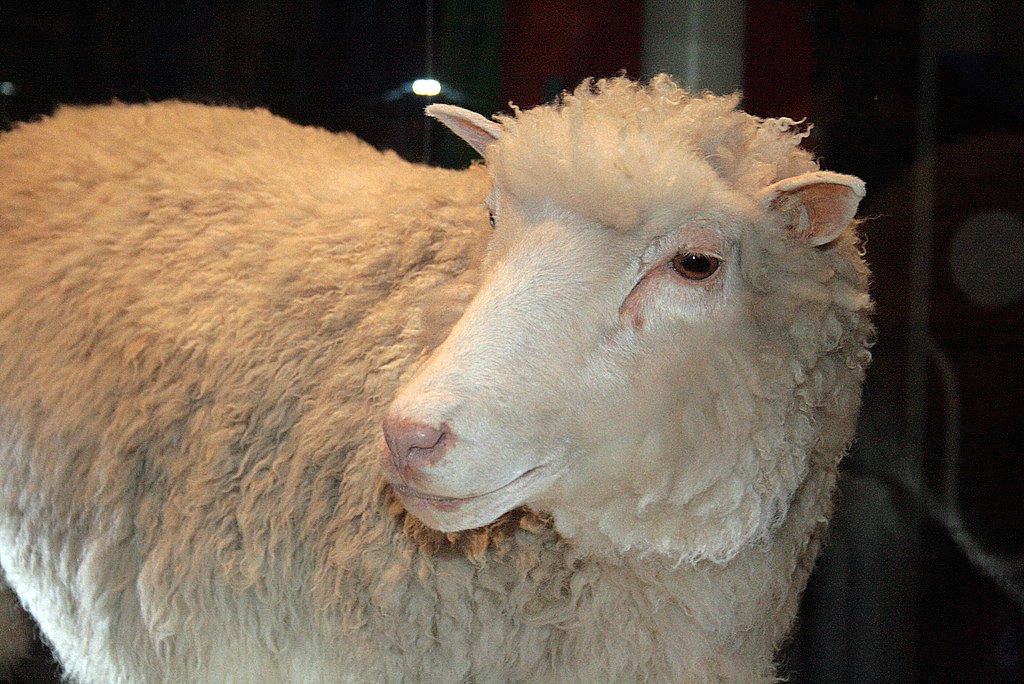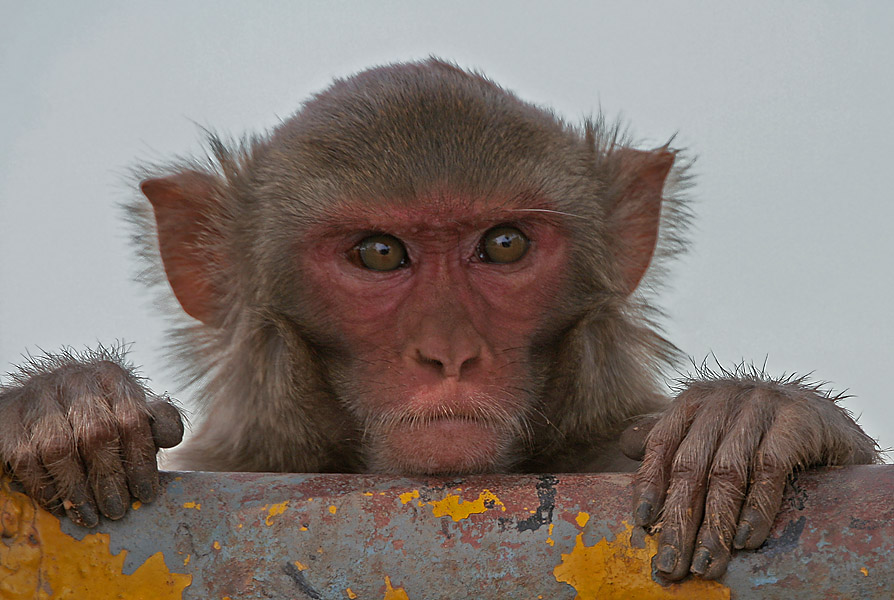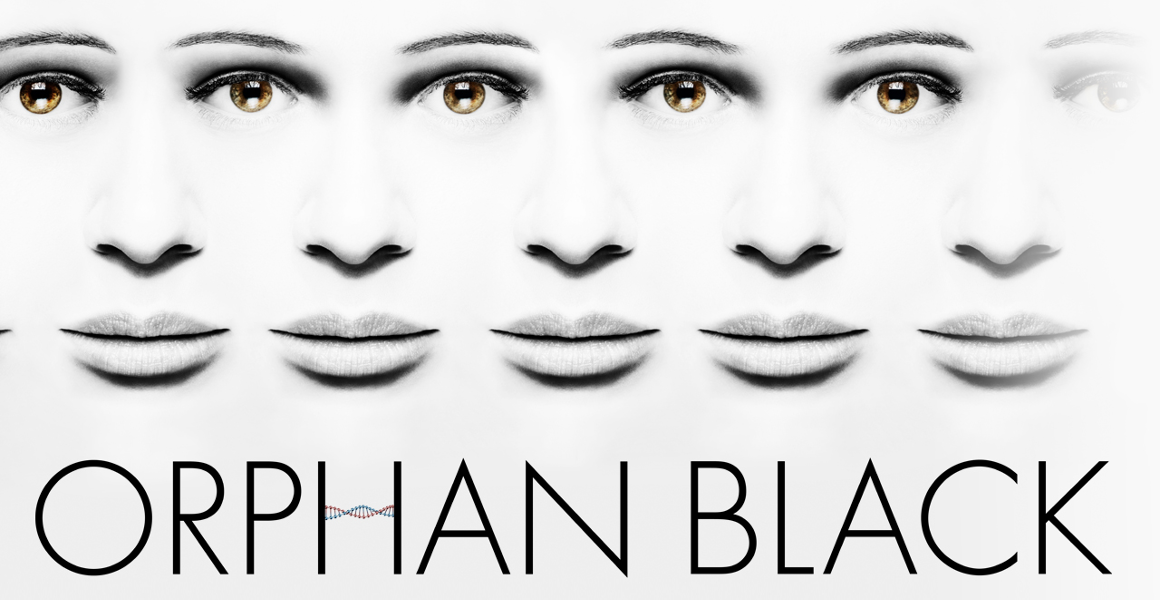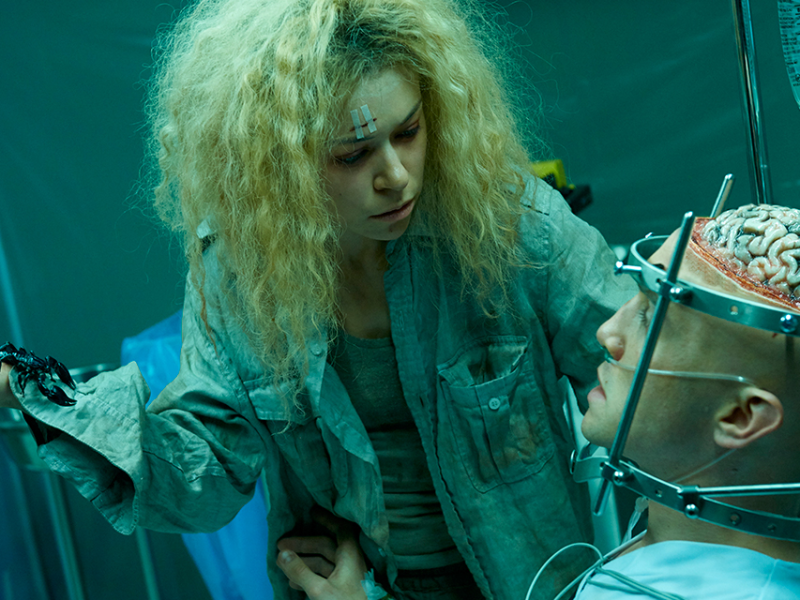Last time we learned that modern synthetic biology is still (thankfully?) years away from synthesizing human genomes. But I also hinted that the challenge of writing a genome from scratch wasn’t the only thing preventing the Dyad Institute from dominating the world with an army of clones.
In episode 6 of season two, To Hound Nature In Her Wanderings, when Orphan Black’s vivacious protagonist and most wayward clone, Sarah Manning (Tatiana Maslany), finally meets her maker, Dr. Ethan Duncan (Andrew Gillies), co-leader of Project Leda, he reveals, "My wife was the brains of the operation. Did you know she solved the spindle protein problem?" Which I’m sure had a lot of folks asking that age old question: “huh?”
So, what was Dr. Susan Duncan’s (Christy Bruce) breakthrough? Has there ever been a real world “spindle protein problem,” and, if so, have biologists solved it? For that matter, what’s a spindle protein? Heck, what’s a spindle? Actually, let’s catch everyone up and talk about proteins for a minute.
What is a Protein?

Protein is more than just the glop comprising bodybuilders’ shakes. Proteins, like fats and carbohydrates, are one of the building blocks of life, and they come in two flavors. No, I don’t mean chocolate and vanilla, I mean structural and functional. Structural proteins are the physical building blocks of life, comprising all sorts of, well, structures, from your muscle fibers to your hair (which is coincidentally made out of the same protein as rhinoceros horns). Functional proteins, like the name suggests, well, function—they make stuff happen. For example, enzymes, like lactase and amylase, help you digest food, like milk and starch, respectively, while other proteins keep your cells alive and multiplying.

Hundreds of specific proteins function in the process of cell division, a.k.a. mitosis. Every single one of the many trillions of cell divisions that happen in your lifetime requires gaggles of proteins. In brief, during mitosis, your chromosomes are duplicated, sorted, and transferred to opposite ends of a cell (a.k.a. mother cell) before it divides into two new cells (a.k.a. daughter cells).
When spindle proteins are missing, daughter cells with anywhere from 0 to 92 chromosomes are produced, effectively arresting embryonic development after just a couple cell divisions.
(Oddly, if you were a pear, apple, or barley plant, a doubling or QUADRUPLING of your entire set of chromosomes would just make you weirdly huge, which is why many of the plants we eat have unusual numbers of chromosomes. But if you were a pear, apple, or barley plant, you probably wouldn't be reading this.)
The First Clone, Dolly the Sheep

Alright, so what do spindle proteins and mitosis have to do with clones like Sarah, Cosima, and Alison? Well, remember Dolly the Sheep? In 1997, Scottish scientists isolated a normal unfertilized sheep egg under a microscope, removed its original chromosomes, and inserted new chromosomes from another adult sheep’s mammary gland cell in a process called “somatic cell nuclear transfer.” Scientists were excited about Dolly because she was the first genetic copy made of an adult animal. The process was intensive and had a high failure rate (276 failures out of 277 attempts), but, theoretically, researchers could have made as many “Dollies” as they wanted.
So why hasn’t there been a human “Dolly” yet? Ethical issues aside, the process that works in sheep doesn’t work in humans. Nor does it work in chimps, Rhesus macaques, or any primate for that matter. In the early post-Dolly years, primate cloning proved elusive. There were plenty of tongue-in-cheek comments about the Big Man Upstairs keeping mere mortals from meddling in the mysteries of human life.
The Problem of Primate Mitosis

(Credit: J.M. Garg)
What was going wrong? Mitosis was breaking down in the cloned primate zygotes. The cells were unable to divide. We now believe that this was the result of missing or disorganized “spindle proteins.” In sheep, and a few related species, the spindle proteins reorganized after the cloning process, but in most other animals, especially primates, the same techniques were simply too disruptive.

The path from a single-celled zygote to a full-term, independent organism, (i.e., a newborn infant) requires billions of cell divisions, and if the cellular machinery do not almost always get it right, you end up with some rather horrific defects—the sort of defects that transcend Alison’s drinking, Cosima’s respiratory problems, and Sarah’s reticence toward authority. For example, an extra chromosome 21 causes Down syndrome and extra sex chromosomes yield serious physical abnormalities and sterility. Deletions of chromosomes are even more disastrous; embryos lacking chromosomes fail to implant or spontaneously abort shortly thereafter. Hence, primate cloning efforts were unsuccessful, thanks to faulty spindles.
These complications abated, temporarily, in 2004, when a team of Korean scientists falsely claimed to have cloned a human embryo.
Things were hopeless. Until 2007, when a team of researchers at the Oregon Health & Science University led by Dr. Shoukhrat Mitalipov coddled rhesus macaque cells just enough to create the first stable stem cell line from a verifiable primate somatic cell nuclear transfer. In laymen’s terms, they performed the same procedure that produced Dolly, but much, much, much, much more carefully. For example, they microsurgically gathered chromosomes from individual cells at such a cell developmental time point and in such a way that the chromosomes were already associated with the spindle proteins necessary to permit normal cell division. In other words, they collected chromosomes, spindles, and their proteins after they were already naturally aggregated. Such cloned Rhesus macaque zygotes were able to divide again and again and again, until they became real fetuses. The primate spindle problem was solved! So where are the human clones? For that matter, where are the monkey clones?
Cloning Primate Cells
So far, these cloned zygotes have produced clinical pregnancies in macaques of up to 81 days. Alas (or luckily), none of these cells have matured into cloned primates. In other words, we can use this technique to make embryonic stem cells, but living primates will not mature from these cells. While the “spindle protein problem” has been solved, a new difficulty has arisen in its place. Current research suggests the stems cells lack the correct epigenetic programing to produce healthy fetuses. Translation: something about the cloning procedure mucks up the genes that are normally turned off or on in a natural zygote.
And just last year Dr. Mitalipov was back at it again, producing the first ever human embryonic stem cells via this same procedure. While institutional ethics committees would surely reject any proposal to implant cloned stem cells into willing human participants, it is pretty certain that such attempts would fail, just as they have in non-human primates.
Solving the “Spindle Protein Problem”
Can the “spindle protein problem” be solved?
Absolutely. It already has been, but there is just one big catch. An even more mysterious problem has taken its place!
Simply put, an artificial, cloned human zygote may divide for a couple months, but it cannot yet produce a full-term pregnancy.
Furthermore, if you tried to replicate Dr. Mitalipov’s procedures with an artificial genome, like Sarah and her sisters share, you couldn’t even obtain stem cells. The artificial chromosomes (which we already determined are currently impossible to construct) would be lacking the dozens of proteins necessary for spindle fibers to properly do their jobs. Clearly, Dr. Susan Duncan must’ve had an alternative “spindle protein problem” solution.
While we are inching ever closer to the world in which the clones of Orphan Black are possible, we are not there yet. We can’t make the requisite artificial genomes, and even if we could, we wouldn’t have a darn thing to do with them. Considering the clones of Project Leda were produced 30 years ago, the Dyad Institute was way ahead of its time. And they were even ahead of our time.
Check some of our other articles
- Can Kira's stem cells save Cosima in 'Orphan Black'?
- Does epigenetic variation explain differences among clones?




